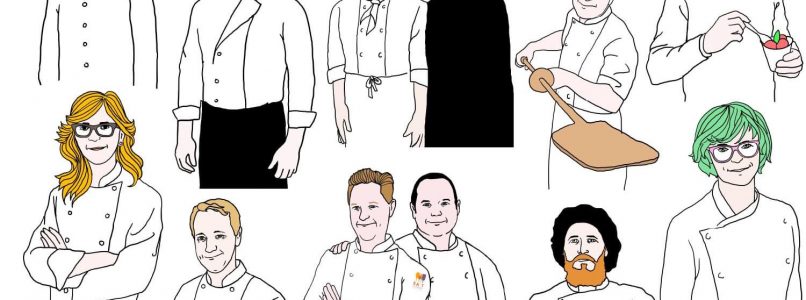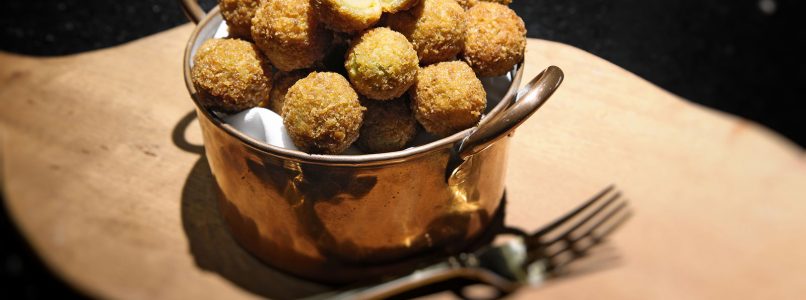Networking. This is the guiding spirit of EA (s) T Lombardy which is committed to promoting food and wine in the provinces of Bergamo, Brescia, Cremona and Mantua and supporting the national and international reputation of the excellence of its producers and restaurateurs. Eastern Lombardy, hard hit by the health emergency that hit us in 2020, can now count on a reality ready to celebrate the link between catering and its territory, supporting and defending it through quality. With 300 restaurateurs, 250 producers, 25 PDO and PGI products, as many DOCG, DOC and IGT wines and 11 Slow Food presidia, it is an area that deserves to be protected and enhanced. Such as? By supporting the protagonists of EA (s) T Lombardy in this post-health emergency recovery, trying to understand with them how to recover and what to focus on.
Here the testimonies of those who are ready to start again, focusing first of all on quality.
MARIO CORNALI: CHEF AND OWNER OF THE RESTAURANT COLLINA di ALMENNO SAN
BARTOLOMEO (BG)
“When we reopened it seemed like starting from scratch. But it was a very charged restart from an emotional point of view. My most loyal customers came to visit me, it was a tribute of esteem and affection. We in Bergamo and its province have experienced a tragedy, even emotionally it is not possible to pretend nothing has happened, but the world goes on, is rebuilt and regenerates. We never stopped working, we made delivery throughout Lombardy with our Easter Doves, we experimented with new recipes, rethought the spaces, clean, renewed, thrown useless things. Somehow we have put order in both a real and metaphorical sense. From a practical point of view, working with a mask is not a limit, we cannot be so frivolous to say that we are grieved because we have to wear the mask. Let's say that restaurateurs in general have been put in a position to intervene and improve their offer for the customer: more hygiene, more space, more services ".
FRANCO GIORDANO owner and chef of the Pizzeria OTTAVO NANO – BRESCIA
“We reopened immediately and immediately received reservations. But our customers are not customers, they are friends we call by name. Me, my parents and grandparents have established a relationship with them: grandparents parents grandchildren, everyone comes as if they were going home. I am optimistic about this reopening, certainly fearful that everything could recollect and annoyed that many Lombard restaurateurs do not adopt the correct and imposed rules. It is clear that the number of seats is decreasing: we now have 100 seats outside in the open. There were 80 inside and 28 have become 28. On the other hand, customers are obedient, they don't complain, they appreciate greater protection. The distancing is effective and makes them feel calm, they appreciate the attention. We have also decided not to take away to protect the quality of products and ingredients, to ensure proper conservation and consumption. We preferred to wait, and I hope everyone will do what there is to do in order to protect each other and always guarantee the quality of the service and proposals to our customers ".
SERGIO CARBONI from the RESTAURANT LOCANDA DEGLI ARTISTI – CREMONA
“We had a great desire to reopen and a lot of enthusiasm, because we love our job that in the past weeks we have been missing a lot. At the reopening some regular customers came, who gave us a gesture of esteem and friendship. It will take time and to understand what government aid will be to judge the effects from an economic point of view, it was certainly an exciting and positive moment for us and our guests. We must think positively, transmit messages of trust and encourage people, make them feel good, welcomed and at ease. "
And there are those who choose to open one more day, such as the VIOLET HOSTARIA of Castiglione delle Stiviere – MANTUA
"Fortunately, in our restaurant we already had the tables spaced before and the response from the customers was very good if we exclude an initial feeling of estrangement due to the change of approach, mandatory due to the measures in place. People still want to go back to restaurants. We have chosen to have a definitely proactive approach, otherwise we cannot work in our sector. The economic conditions are worrying. We have chosen to open an extra day a week to try not to have to leave any of our employees at home and we have increased our offer with the takeaway that we did not do before; even so we get to 60% of the pre-pandemic income, but having recently opened it is still too early to make calculations. It is enough for now to stand. "



